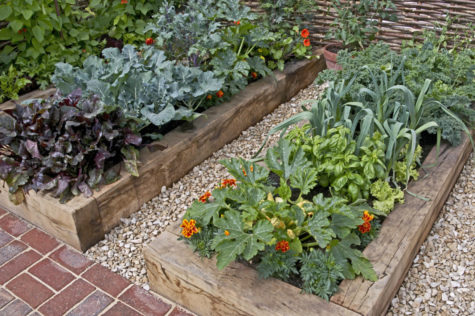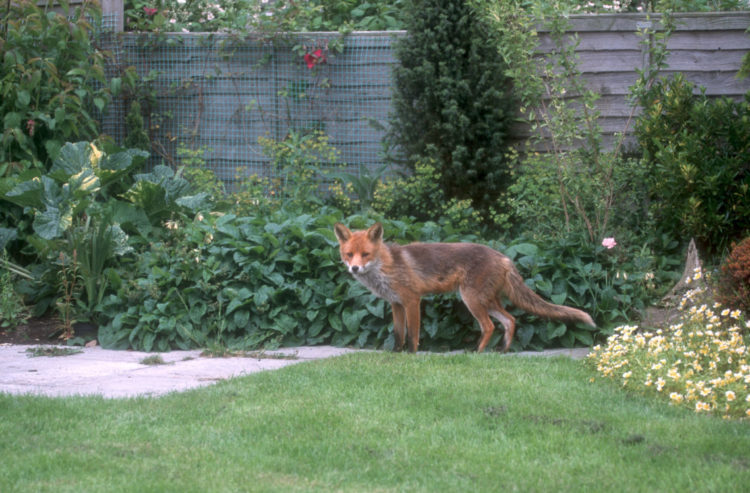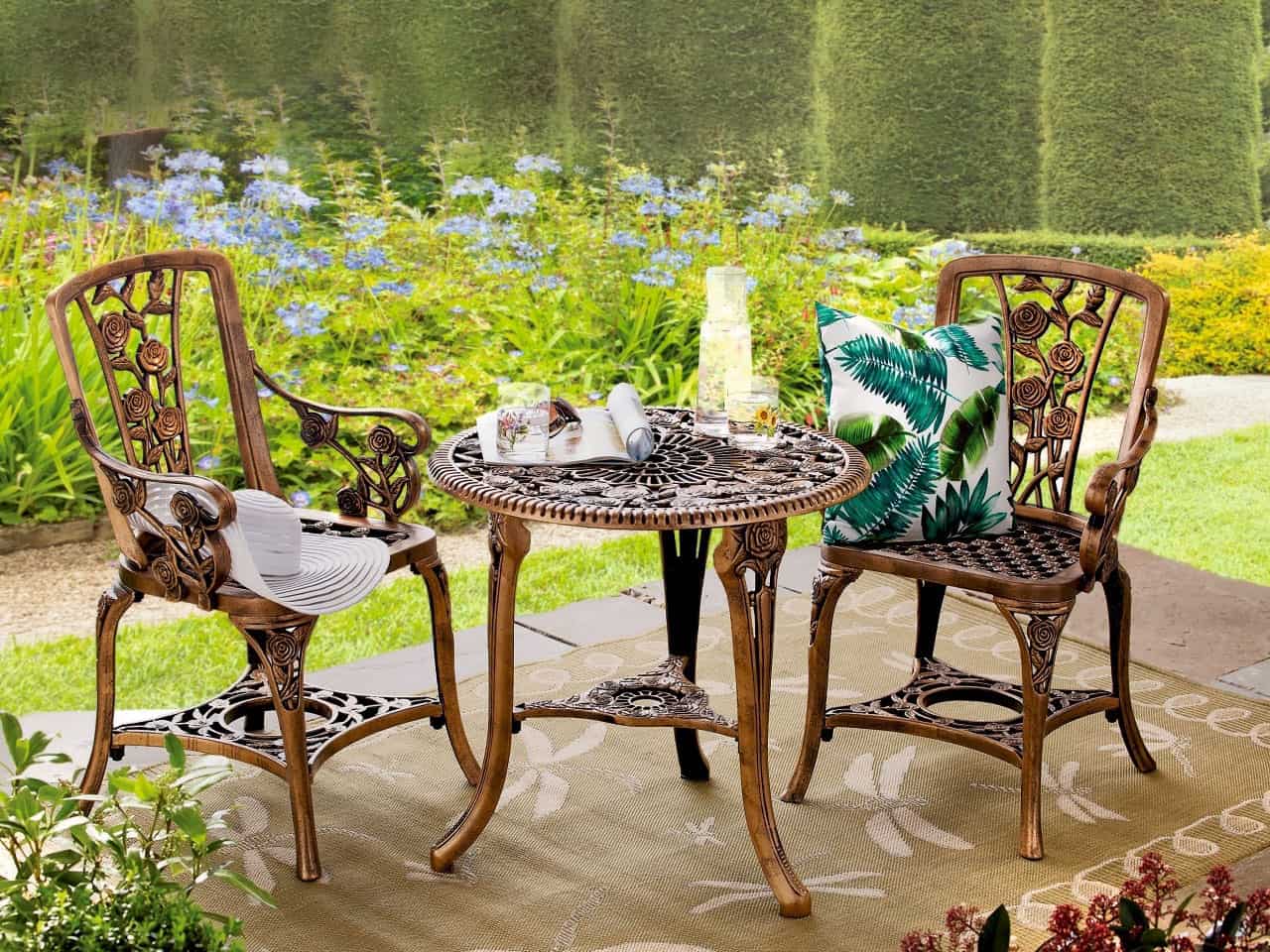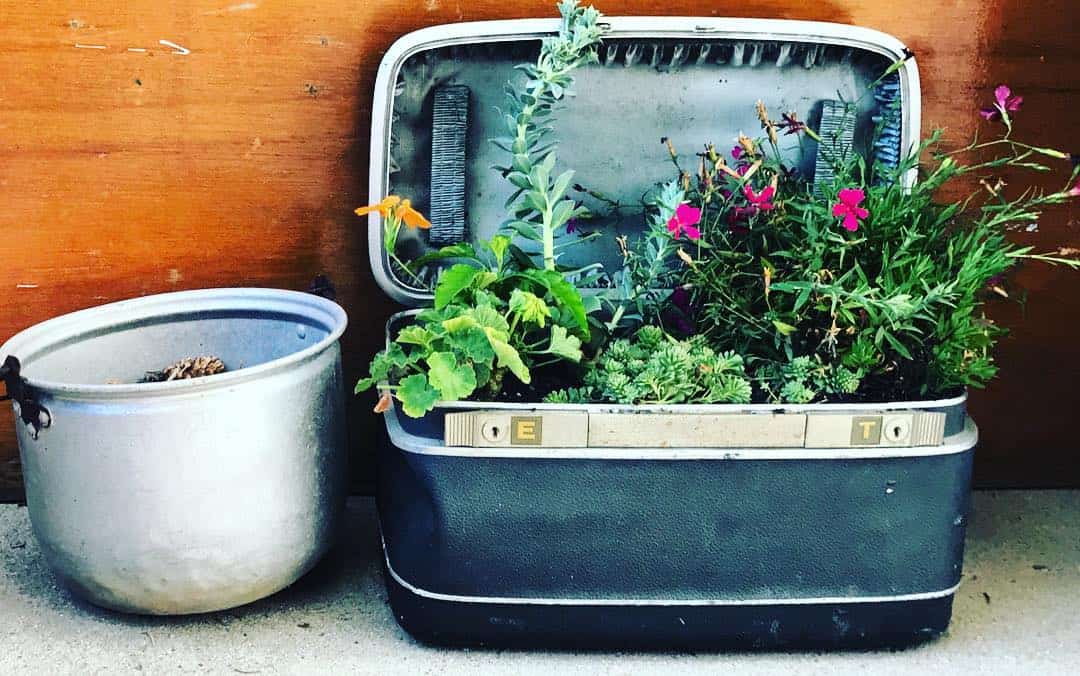If your garden has a few shady spots, you might be wondering what plants will grow there. Luckily, there are several shade-loving species that you can add to your garden.
To choose the correct plants you’ll need to understand the different types of shade as well as which aspect your garden belongs to.
Here’s everything you need to know:
Understanding shade and garden aspects
Before you head to the garden centre to buy your favourite shade-loving plants, you need to know what kind of shade you’re looking to plant in. Not all shade lovers will grow in all kinds of shade.

Credit: mwms1916
Garden aspect
Your garden’s aspect simply refers to the direction your garden faces; north, south, east or west. Figuring out which aspect your garden faces will help you to determine which areas will be shady all day, which get partial shade and which have full sun.
The easiest way to determine the aspect of your garden is by using a compass. Simply stand by the outside wall of your house that faces your garden and look at the compass.
North-facing gardens
North-facing gardens are shady spaces but the shady areas do move according to the season. The house, trees and walls will block the sun for most of the day depending on where the sun is. Keep in mind that the back of the house will get decent sun in the afternoon, especially from May to October, but full shade any other time of the year.
North-facing gardens are great for any plants that enjoy midday shade as it stops colours from fading and prevents leaf burn on others. Great plants for these gardens include hellebores, snowdrops and pulmonaria. These plants prefer morning and evening sunlight and will grow despite having shade overhead during most of the day. For more shade-loving plants, check out our list below.

By Richard Croft, CC BY-SA 2.0
South-facing gardens
If you have a south-facing garden, you can expect plenty of sunshine throughout the day. The house will be in full sun all day long while the east and south borders will get evening and morning sun respectively. The north-facing borders will only have sun from May to October depending on if the house blocks it or not.
Once you know which areas of your garden will get very little or no sun at all, you can plan where to plant shade lovers. In the shady north-facing areas, you can plant ivy, hostas and ferns. These plants do just fine in morning and evening sunlight but prefer to be shaded during midday. The rest of your garden can be filled with sun lovers or those that prefer partial shade.

Credit: Max Pixel
East-facing gardens
Gardens that face east get mostly morning sun. It’s best to plant partial shade lovers here since they’ll be getting sun for at least half the day and shade the rest. Plants with white flowers like honeysuckle, Nicotiana sylvestris and clematis will enhance this garden aspect.

Credit: Public Domaine Pictures
West-facing gardens
Gardens that face west are usually shaded in the morning but get sun in the afternoon and evening. It’s best to plant specimens that can handle the heat of the midday and early afternoon sun in summer. Plants you can consider include magnolias, sedums and camellias.

By mym, CC BY-SA 2.0,
Degrees of shade
Once you know which areas of your garden are in the shade and when, you can find out how deep the shade really is. Here’s a quick explanation of the degrees of shade.
Partial shade
Whatever the aspect of your garden, you will have some areas with partial shade. Partial shade means the area receives sunlight for at least 3 to 6 hours a day depending on the season.
Many plants, such as geraniums, thrive in partial shade. If you have areas with this type of shade in your garden, you can consult the list below for great plant options.
Dappled shade
Dappled shade is usually seen in areas with large deciduous trees. This means the plants will be sheltered from the harsh summer sun, but they’ll be in full sun from autumn until spring. Fortunately, the sun is very weak during this time. In summer months the tree’s leaves will create a patchwork of shady and sunny spots that move around the ground as the wind blows. Plants that prefer afternoon shade and woodland plants will do very well in this type of shade.

Credit: Pxhere
Deep shade
Deep shade is usually found right next to north-facing walls and under evergreen trees. This area rarely, if ever, gets sunlight and tends to be dry and cold. Plants like hostas and ferns tend to do very well in these areas.
16 best plants for shady areas
Now that you understand the shade in your garden, it should be a lot easier to choose shade-loving plants for those hard to fill areas. Here are a few plants to consider:
1. Iris foetidissima
Other names: Stinking iris, Blue seggin, Gladden
Care level: Easy
Position: Full shade, partial shade or full sun
Aspect: All
Moisture level: Moist but well-drained
Soil pH: Acidic, alkaline or neutral
Size: 1 metre high, 0.5 metres wide
Stinking iris is an evergreen plant that bears yellow-tinged, purple flowers in summer. After flowering, you can expect this bush to fruit creating orange-red fruits in autumn that persists into winter. These fruits stand out quite spectacularly against the dark green foliage.
To keep this plant happy, make sure to plant it in well-drained, slightly acidic loam. It will tolerate other soil types, but slightly acid loam is best. You can plant it just about anywhere as well.

Credit: Geograph
2. Snowdrops
Other names: Candlemas bells, candlemas lily
Care level: Easy
Position: Partial shade
Aspect: All
Moisture level: Moist but well-drained
Soil pH: Acidic, alkaline or neutral
Size: 15cm high and wide

Credit: Torange
If you’re looking for a plant that will brighten up your garden in mid-winter, then snowdrops are a great choice. This stunning bulbous perennial creates white and green flowers in mid-winter along with silvery green leaves. The leaves will last a bit longer than the flowers before the bulb goes dormant for summer and autumn.
This bulb needs to be planted in moist, well-drained soil to keep it healthy. Partial shade is best. It will also grow really well in dappled shade. Make sure the soil is humus-rich and never dries out completely, especially in summer.
3. Winter aconites
Other names: Winter hellebore, Winter wolf’s bane, Eranthis hyemalis
Care level: Easy
Position: Partial shade or full sun
Aspect: All
Moisture level: Moist but well-drained
Soil pH: Acidic, alkaline or neutral
Size: 10cm high and wide

By Martin Olsson (mnemo on en/sv wikipedia and commons, martin@minimum.se). – Own work, CC BY-SA 3.0
Winter aconite is a perennial that will return year after year. It has foliage and flowers from late winter into spring. The flowers are yellow in colour and cup-shaped.
You will find that this plant tolerates most soil types but it does best in alkaline soil. Make sure to grow aconites in an area with partial shade, dappled shade or full sun. Deep shade would cause this plant not to flower.
4. Campanula portenschlagiana
Other names: Wall bellflower, Adria bellflower, Campanula muralis
Care level: Easy
Position: Partial shade or full sun
Aspect: All
Moisture level: Moist but well-draining
Soil pH: Acidic, alkaline or neutral
Size: 0.5 metres high and wide

By Syrio – Own work, CC BY-SA 4.0
Adria bellflower is a mat-forming perennial that prefers to grow low to the ground. This plant is sometimes used as an annual in containers. You can expect star-shaped, violet-blue flowers from late spring into summer.
Wall bellflowers are often used as planted borders or in rock gardens. The soil needs to be able to retain some water so it will feel slightly damp when touched but drain well. If you have very wet winters, Adria bellflower can only be planted as an annual.
5. Foxgloves
Other names: Digitalis purpurea ‘Serendipity’
Care level: Easy
Position: Partial shade (Dappled shade)
Aspect: All
Moisture level: Moist but well-drained
Soil pH: Acidic or neutral
Size: 1.5 metres high, 0.5 metres wide

Credit: Pxhere
Foxglove ‘Serendipity’ is a biannual perennial which means it will grow for two seasons before it needs replacing. This plant forms sterile flower spikes in its first year so you won’t need to worry about this plant self-seeding and taking over your garden. Foxgloves are excellent for attracting bumblebees.
Foxgloves are best grown in moist, humus-rich but well-drained soil. If left to stand in water for too long, they will quickly develop root rot. It’s also best to plant foxgloves in an area with dappled shade for the best results.
6. Pulmonaria officinalis
Other names: Common lungwort, Bedlam cowslip
Care level: Easy
Position: Partial shade or full sun
Aspect: North-, West- or East-facing
Moisture level: Moist but well-drained
Soil pH: Acidic, alkaline or neutral
Size: 0.5 metres high and wide
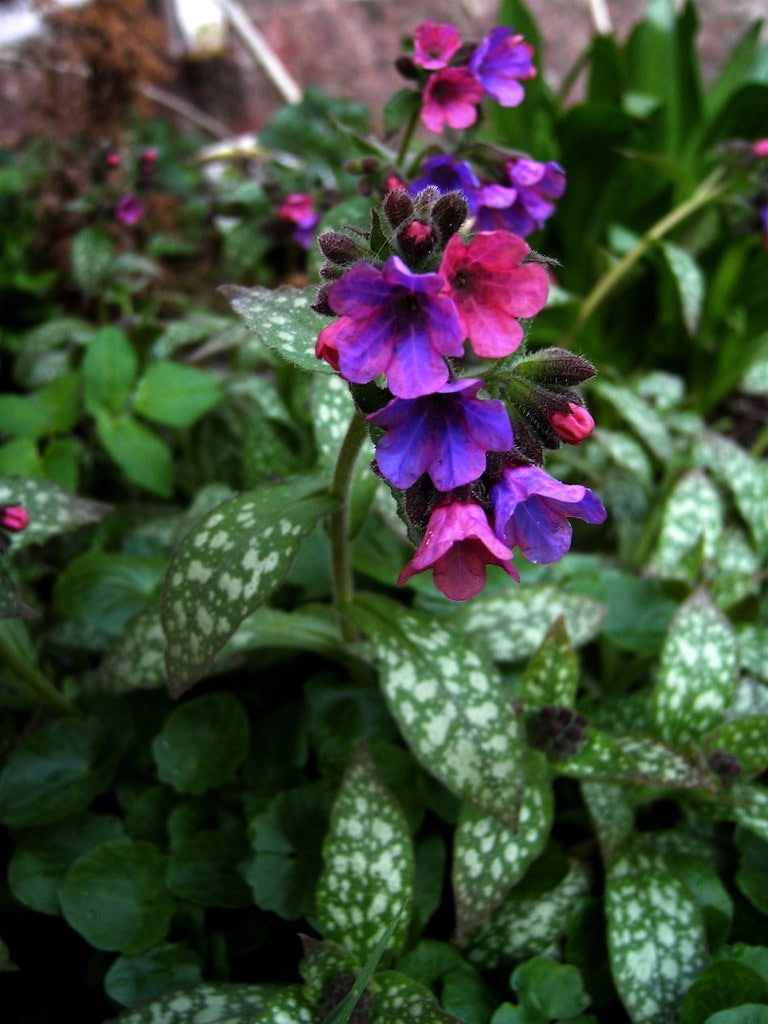
By AnnaKika
Lungwort is a semi-evergreen perennial with greenish-white spots on the leaves. This plant creates clusters of flowers in early spring that emerge as pink before changing to blue.
Lungwort needs moist but well-draining soil. If you leave it standing in water for too long, your plant will quickly develop root rot. If the soil drains too quickly without retaining any moisture, the plant will wilt and become stunted. Make sure the soil is humus-rich for the best growth and flower production.
7. Brunnera macrophylla ‘Looking Glass’
Other names: Brunnera macrophylla ‘Silver all over’
Care level: Easy
Position: Full shade, partial shade or full sun
Aspect: All
Moisture level: Moist but well-drained
Soil pH: Acidic, alkaline or neutral
Size: 0.5 metres high and wide

Photo by David J. Stang – source: David Stang. First published at ZipcodeZoo.com, CC BY-SA 4.0
Looking glass is a silver-leafed, clump-forming perennial that flowers from late winter into summer. It creates beautiful sprays of blue flowers that will brighten up your garden in late winter before anything else really grows. The silvery leaves with green veins can be seen in spring and summer before they disappear back into the ground.
Looking glass can grow just about anywhere as long as it’s sheltered from extreme wind and frost. This makes it ideal for growth in all garden aspects. Make sure to keep the soil moist but well-drained, your plant should never stand in water for long periods of time.
8. Helleborus thibetanus
Other names: Tibetan hellebore
Care level: Easy
Position: Partial shade
Aspect: All
Moisture level: Moist but well-drained
Soil pH: Alkaline or neutral
Size: 0.5 metres high and wide

By Josh Westrich – eigene Arbeit – own work, CC BY-SA 2.0 de
Tibetan hellebore is a deciduous perennial that carries its leaves from spring into early summer before they die back. In early spring, you can also expect to see large bell-shaped flowers. These flowers are white to begin with, before turning to pale pink then green.
It’s best to grow Tibetan hellebores in partially-shaded woodland gardens with moist, well-drained, humus-rich soil. In summer and autumn when the plant is dormant, reduce watering and allow the soil to be on the drier side to prevent the bulbs from rotting.
9. Heuchera sanguinea
Other names: Coral bells, crimson bells, fairy flower
Care level: Moderate
Position: Partial shade or full sun
Aspect: All
Moisture level: Moist but well-drained
Soil pH: Neutral
Size: 0.5 metres high and wide
Coral bells are semi-perennial, shade-loving evergreens that usually grow in clumps. The leaves range from bright green to purple and silver. In summer you can expect to see sprays of red flowers.
Heuchera can be grown just about anywhere, as long as it’s not in full shade all day long. If kept in full shade, you will notice less marbling on the leaves and it won’t flower.
10. Hosta
Other names: Plantain Lilies ‘Wintersnow’
Care level: Easy
Position: Full or partial shade some can grow in full sun
Aspect: East-, North- or West-facing
Moisture level: Moist but well-drained
Soil pH: Acidic, alkaline or neutral
Size: 1 metre high, 1.5 metres wide
Hosta ‘wintersnow’ is a clump-forming perennial with large, glossy heart-shaped leaves. The leaves are bright green with cream variegated stripes. In summer, you can expect to see clusters of pale purple flowers.
To keep this plant healthy, make sure to grow it in moist but well-drained soil that doesn’t dry out completely. This is especially important in summer. It’s also best to pick a sheltered spot to plant in.
11. Ligularia ‘Leopard’
Other names: Gold-spotted Japanese farfugium,
Care level: Easy
Position: Partial shade
Aspect: East- or South-facing
Moisture level: Moist but well-drained
Soil pH: Acidic, alkaline or neutral
Size: 1 metre high, 0.5 metres wide
Leopard plants are rhizomatous perennials that flower in winter. You’ll recognise this plant by its dark green, kidney-shaped leaves with yellow splotches. The golden yellow flowers of this plant are daisy-like and can be seen in winter.
Ligularia is best planted in well-draining, moist soil in a sheltered area where it will be protected from the wind and cold. This plant is fairly low maintenance but must be checked for pests such as snails and slugs every now and then.
12. Viola tricolour
Other names: Heart’s ease, pansy, wild violet
Care level: Easy
Position: Partial shade or full sun
Aspect: West-, South- or East-facing
Moisture level: Moist but well-drained
Soil pH: Acidic, alkaline or neutral
Size: 15cm high and wide

By GuidoB – Own work, CC BY-SA 3.0,
There are hundreds of different pansy species to choose from. These small bushy plants grow really well in containers and can even be used as borders for your flower beds. Pansies like moist, well-drained soil to prevent any unnecessary diseases such as powdery mildew. You will also have to keep an eye out for quite a few pests like aphids.
Violas are usually planted as annuals, but it is possible to keep them as perennials if you live in a warm enough climate. These plants don’t do too well in summer since they tend to become quite leggy. You can, however, expect flowers all the way through spring to autumn if cared for properly.
13. Primula smithiana
Other names: Candelabra primrose, Glory of the bog, Glory of the marsh
Care level: Moderate
Position: Partial shade or full sun
Aspect: West-, South- or East-facing
Moisture level: Very moist, poorly drained soil
Soil pH: Acidic or neutral
Size: 1 metre high, 0.5 metres wide

By James Steakley – Own work, CC BY-SA 4.0,
Candelabra primrose is a clump-forming perennial. The leaves are formed in a rosette of deep green. If you look closely, you will notice that the leaves are spoon-shaped. In spring you can expect to see several whorls of bright yellow flowers on erect stems.
This moisture-loving plant isn’t the easiest to care for since you need to make sure the soil drains poorly to keep it alive. You can plant it just about anywhere as long as it stays out of full shade. This makes it ideal for all aspects except north.
You will need to cut it back after flowering and look out for pests such as weevils.
14. Heuchera ‘Red Lightning’
Other names: Alumroot ‘Red Lightning’
Care level: Easy
Position: Full or partial shade
Aspect: All
Moisture level: Moist but well-drained
Soil pH: Acidic or neutral
Size: 0.5 metres high and wide
There are many varieties of heuchera and most prefer to grow in shade, but the density of the shade will vary. Make sure you read up on your variety before you buy.
This variety prefers to grow in full or partial shade. Before planting, you will need to make sure the soil is well-draining but has the ability to stay moist. The area also needs to be sheltered from extreme wind.
This clump-forming perennial can be expected to produce white flowers in spring and summer. The striking leaves of this plant are bright golden-green with red veins.
15. Coleus thyrsoideus
Other names: Flowering bush coleus, Plectranthus thyrsoideus, Solenostemon thyrsoideus
Care level: Easy
Position: Partial shade
Aspect: South-facing
Moisture level: Moist but well-drained
Soil pH: Acidic, alkaline or neutral
Size: 1 metre high, 0.5 metres wide
C.thyrsoideus is an evergreen perennial with heart-shaped, round toothed leaves. It usually produces spikes of bright blue flowers in winter.
This plant is best grown in a sheltered area with partial shade, usually in south-facing gardens. Despite being easy to care for, it’s important to plant this beauty in moist, but not waterlogged soil.
If you want your plant to grow bushier, you can pinch back growth tips to stimulate lateral growth. C.thyroideus is best grown in a container.
16. Lobelia pedunculata
Other names: Blue star creeper, Pratia pedunculata
Care level: Easy
Position: Full or partial shade
Aspect: North-, West- or East-facing
Moisture level: Moist but well-drained
Soil pH: Acidic, alkaline or neutral
Size: 10 cm high, 1.5 metres wide

By Ghislain118 http://www.fleurs-des-montagnes.net – Own work, CC BY-SA 3.0,
Blue star creeper is a mat-forming, evergreen perennial. It has tiny rounded leaves and forms star-shaped, pale blue flowers in summer. Male and female flowers occur on different plants. This means that your plant is unlikely to fruit unless you have quite a few of them around.
Make sure to plant this lobelia in a sheltered spot in full or partial shade in moist, well-drained soil.
Conclusion
You should have quite a bit of thinking and planning to do now. As soon as you’re ready, run to the nearest nursery, or simply order your chosen plants online and get planting.
Happy gardening!
Read more: 21 vegetables to grow in shade

Save this pin for later







